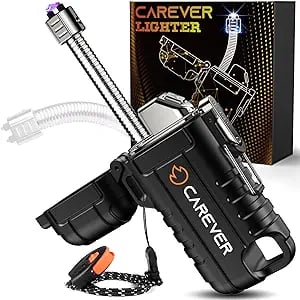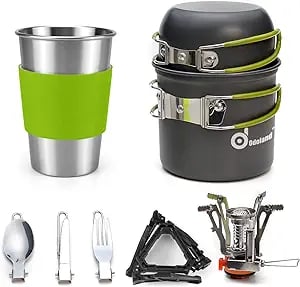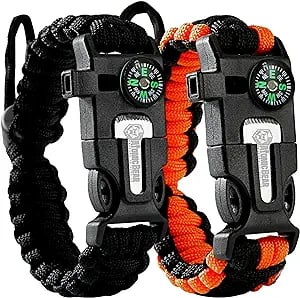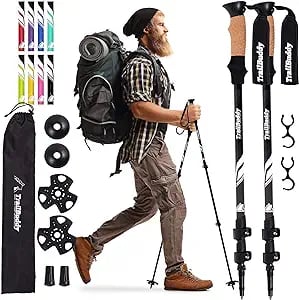Best Hiking Gear & Supplies 2024

Proper hiking equipment and safety measures are essential for a successful and enjoyable outdoor adventure. Equipping yourself with the right gear, such as sturdy footwear, layered clothing, navigation tools, and a well-fitted backpack, ensures comfort and preparedness. Safety essentials like a first aid kit, emergency shelter, and hydration systems are crucial for handling unexpected situations. By planning ahead, staying on marked trails, and being aware of weather and wildlife, you can enhance your hiking experience and create lasting memories while staying safe and comfortable in nature.
As an Amazon Associate, we earn from qualifying purchases.
Thank you for your patronage!
The Essential Guide to Hiking Equipment and Safety
Hiking is a fantastic way to connect with nature, enjoy stunning landscapes, and get some great exercise. Whether you’re planning a short day hike or a multi-day backpacking adventure, having the right equipment and being prepared for safety can make all the difference. Proper gear ensures comfort and convenience, while safety precautions protect you from potential hazards. Let's explore the essential hiking equipment and safety tips to help you make the most of your outdoor adventures.
Footwear
Hiking Boots/Shoes: Investing in a good pair of hiking boots or shoes is crucial. Look for options that provide support, have a sturdy sole, and are appropriate for the terrain you’ll be hiking. Proper footwear can prevent blisters, injuries, and discomfort.
Socks: High-quality, moisture-wicking socks help prevent blisters and keep your feet dry and comfortable.
Clothing
Layering: Dress in layers to adapt to changing weather conditions. Base layers should wick moisture, mid-layers provide insulation, and outer layers protect against wind and rain.
Weather-Appropriate Gear: Always carry a waterproof jacket, hat, and gloves if conditions might warrant them. Sun protection like a wide-brimmed hat, sunglasses, and sunscreen is also essential.
Backpack
Daypack or Backpack: Choose a backpack that fits well and is appropriate for the length of your hike. It should be large enough to carry all your essentials but not so large that it becomes cumbersome.
Navigation Tools
Map and Compass: Even if you’re using a GPS device, always carry a map and compass as a backup. Knowing how to use them is crucial for navigating and staying on course.
GPS Device/Smartphone: A GPS device or smartphone with mapping apps can provide additional navigation support.
Hydration and Nutrition
Water Bottles or Hydration System: Staying hydrated is critical. Carry enough water for your hike and consider a hydration system like a CamelBak for easy access.
Snacks and Meals: Pack lightweight, high-energy snacks like trail mix, energy bars, and dried fruit. For longer hikes, bring more substantial meals that are easy to prepare.
Safety and First Aid
First Aid Kit: A basic first aid kit should include bandages, antiseptic wipes, pain relievers, tweezers, and any personal medications.
Emergency Shelter: An emergency blanket or bivy sack can provide protection if you need to spend an unexpected night outdoors.
Fire-Starting Tools: Waterproof matches, a lighter, and fire starters are essential for warmth and signaling in emergencies.
Whistle: A whistle can be used to signal for help if you get lost or injured.
Lighting
Headlamp or Flashlight: Even if you plan to finish your hike before dark, always carry a headlamp or flashlight with extra batteries.
Trekking Poles
Support and Stability: Trekking poles provide support and stability, reduce strain on your legs, and can help with balance on uneven terrain.
Hiking Safety Tips
Plan Ahead
Research the Trail: Understand the length, difficulty, and conditions of the trail. Check weather forecasts and trail reports.
Tell Someone: Always let someone know your hiking plans, including your start and finish points and expected return time.
Stay on Marked Trails
Follow Trail Markers: Stick to established trails to avoid getting lost and to minimize your impact on the environment.
Pace Yourself
Know Your Limits: Start with easier hikes and gradually take on more challenging ones as you build your fitness and experience.
Take Breaks: Regular breaks for rest, hydration, and snacks will help you maintain your energy levels.
Stay Hydrated and Nourished
Drink Regularly: Sip water throughout your hike rather than waiting until you’re thirsty.
Eat Enough: Keep your energy up with regular snacks.
Be Aware of Wildlife
Keep Your Distance: Observe wildlife from a distance and avoid feeding animals.
Store Food Properly: Use bear-proof containers if necessary and keep your campsite clean.
Weather Awareness
Check Conditions: Be aware of current and forecasted weather conditions. Turn back if the weather becomes unsafe.
Dress Appropriately: Wear and carry clothing suitable for the weather, including waterproof and windproof layers.
Emergency Preparedness
Know Basic First Aid: Understanding basic first aid can be lifesaving.
Have an Emergency Plan: Know what to do if you get lost or injured. Stay calm, use your emergency supplies, and signal for help if needed.
Proper preparation with the right equipment and adherence to safety practices are the cornerstones of a successful and enjoyable hiking experience. By investing in quality gear and planning for all eventualities, you ensure that your time on the trail is both safe and fun. Whether you’re embarking on a short day hike or a multi-day adventure, being prepared allows you to fully immerse yourself in the beauty of nature and make the most of your outdoor pursuits. Happy hiking!
CLICK ON THE IMAGE FOR DETAILS!
Subscribe to our newsletter
Enjoy exclusive special deals available only to our subscribers.















































